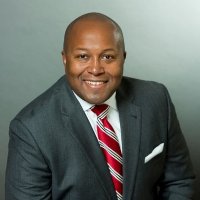
The place: A mansion on Sunset Boulevard, Los Angeles, 5 a.m. Lloyd Webber borrowed several of the tunes from his 1986 mini-musical Cricket, written with Tim Rice, which had been performed at Windsor Castle and later at the 1986 Sydmonton Festival. A revised version, written by Black and Christopher Hampton had a complete performance at the 1992 Sydmonton Festival, now with Patti LuPone playing Norma, and Kevin Anderson as Joe Gillis, again. While a complete story, it was still in the experimental stage and not ready for potential producers. This original version starred Ria Jones as Norma, and Michael Ball as Joe Gillis, directed by Andrew MacBean.

Don Black was later brought in to work with Powers the two wrote the version that was performed in 1991 at Lloyd Webber's Sydmonton Festival. In 1991, Lloyd Webber asked Amy Powers, a lawyer from New York who co-wrote the lyrics for the musical Cinderella: A Musical, to write the lyrics for Sunset Boulevard. At that point, Lloyd Webber "felt it was the subject had to compose next", though by February 1990 he had announced plans to turn Really Useful Group private so he could "make movies rather than musicals." In 1976, after a conversation with Hal Prince, who had the theatrical rights to Sunset, Lloyd Webber wrote "an idea for the moment when Norma Desmond returns to Paramount Studios" Lloyd Webber did no further work on the play until after 1989's Aspects of Love. When Lloyd Webber saw the film in the early 1970s, he was inspired to write what he pictured as the title song for a theatrical adaptation, fragments of which he instead incorporated into Gumshoe. A few years later, when he was invited by Hal Prince to write the score for a film remake starring Angela Lansbury as a fading musical comedian rather than a silent film star, Sondheim declined, citing his conversation with Wilder. After all, it's about a dethroned queen".

"You can't write a musical about Sunset Boulevard," Wilder responded, "it has to be an opera. A chance encounter with Billy Wilder at a cocktail party gave Sondheim the opportunity to introduce himself and ask the original film's co-screenwriter and director his opinion of the project (which was to star Jeanette MacDonald). In the early 1960s, Stephen Sondheim outlined a musical stage adaptation and went so far as to compose the first scene with librettist Burt Shevelove. A recording of the entire score, which had been housed in the Gloria Swanson archives at the University of Texas, was released on CD in 2008. On 20 February 1957, Paramount executive Russell Holman wrote to Swanson asking her to cease work on the project because "it would be damaging for the property to be offered to the entertainment public in another form as a stage musical." In 1994, Hughes incorporated material from the production into Swanson on Sunset, based on his and Stapley's experiences in writing Boulevard!.

Rights holder Paramount Pictures originally had given Swanson verbal permission to proceed with the musical, but there had been no formal legal arrangement. However, it has been the subject of several legal battles and ultimately lost money due to its extraordinary running costs.įrom approximately 1952 to 1956, Gloria Swanson worked with actor Richard Stapley (aka Richard Wyler) and cabaret singer and pianist Dickson Hughes on a musical adaptation originally entitled Starring Norma Desmond, then Boulevard! It ended on a happier note than the film, with Norma allowing Joe to leave and pursue a happy ending with Betty. Opening first in London in 1993, the musical has had several long runs internationally and enjoyed extensive tours. When young screenwriter Joe Gillis accidentally crosses her path, she sees in him an opportunity to make her return to the big screen, with romance and tragedy to follow. The plot revolves around Norma Desmond, a faded star of the silent screen era, living in the past in her decaying mansion on the fabled Los Angeles street. It is based on the 1950 film of the same title. Sunset Boulevard is a musical with music by Andrew Lloyd Webber, and lyrics and a book by Don Black and Christopher Hampton.


 0 kommentar(er)
0 kommentar(er)
